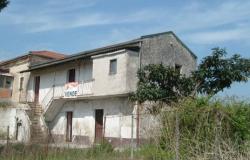Italian housing prices went up by 1.4% over the last six months, while sales volumes dropped by 14%, according to a report by the Agenzia del Territorio
Italian property prices continue to grow, albeit very slowly, while sales volumes keep declining. This is the market picture painted in the latest report by the Agenzia del Territorio, the Italian equivalent of the Land Registry, which was published on 30 September.
According to the Agenzia, Italian residential sales totalled 780,953 during the first semester of 2008, dropping by 14% over the same period last year. The decline was more marked in the North of Italy (-15.4%) than in the South (-10.7%), while the Centre was nearly on par with the national average at -14.8%.
Prices, by contrast, continued to go up, increasing 1.4% over the last semester of 2007 and 4.3% year on year. As a result, the turnover of the Italian residential property market decreased by a smaller percentage than the sales volumes—10.8% compared to 14%.
The average price of homes in Italy is now €1,580 per square metre, although it is actually higher in provincial capitals, which average €2,286, and lower elsewhere (€1,307). Between the first semester of 2004 and the first semester of 2008, average prices have grown by a whopping 29.1%.
However, the rate of house price inflation has slowed down considerably since the end of 2006, and it is now just under half what it was in the second semester of 2007.
In the last six months, the annual rise was smallest in Northern Italy, where it totalled 2.3% for provincial capitals and 3.2% elsewhere, against 4.8% in Southern capitals (6.5% outside them), and 5.2% in Central capitals (and 5.8% elsewhere in the Centre).
Although the slowdown is consistent across all Italian regions, buyers in the North, Centre and South show remarkably different behaviours. As a rule, small properties (between 45 and 70 square metres) are the most popular in the North, while medium-sized ones (between 90 and 130 square metres) are more sought-after in the South. In the Centre, both attract roughly the same number of buyers. However, small homes are the ones that saw the biggest drop in sales volumes and turnover in the North, whereas larger homes performed better. In the Centre and South, the opposite took place: sales volumes declined the most for the larger-sized properties, while smaller ones held up best.
The Agenzia also reports that a handful of places across Italy are bucking the slowdown trend. Growth continues unabated in 13 provincial capitals across the country, and particularly so in Pavia, Vicenza, Reggio Emilia, Viterbo, Siena, Terni and Reggio Calabria, where volumes increased by between 10% and 20%, as well as the towns and villages in the Reggio Emilia province, which saw a rise of more than 20%.













